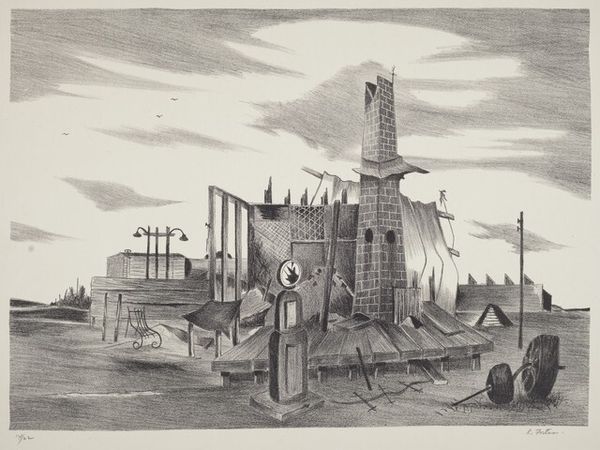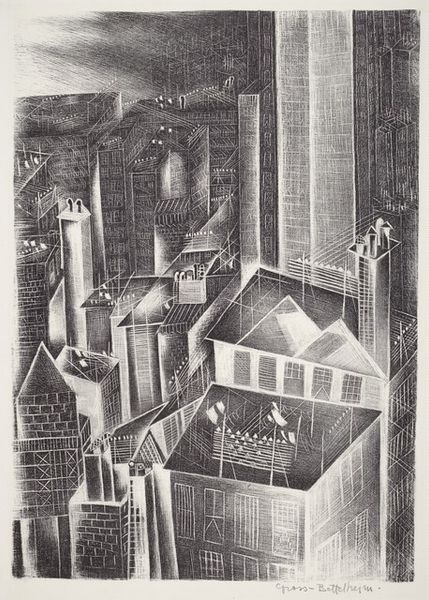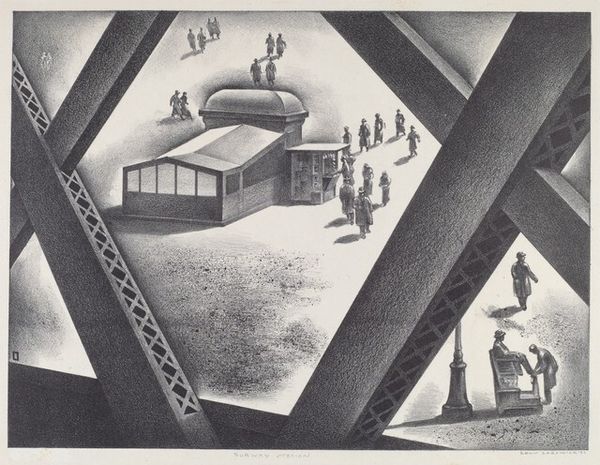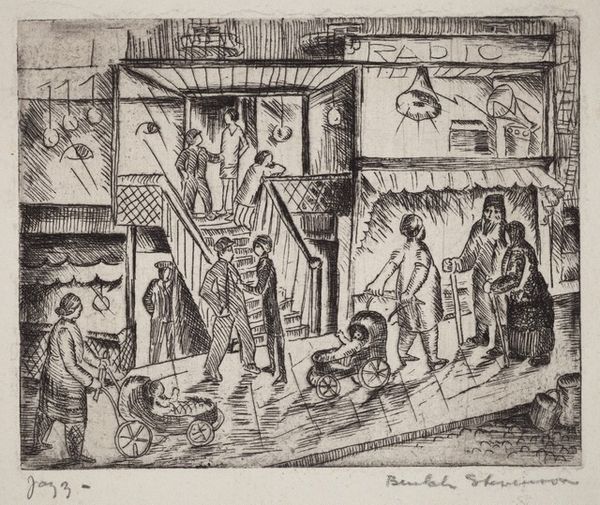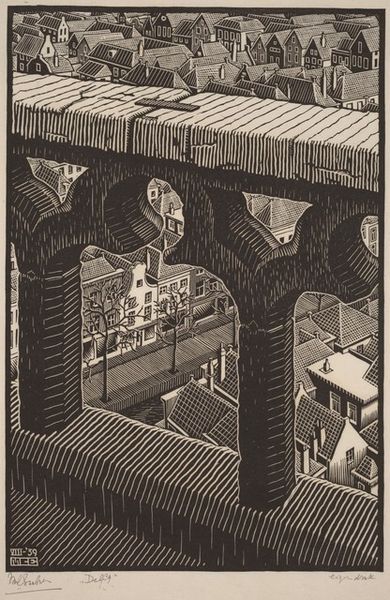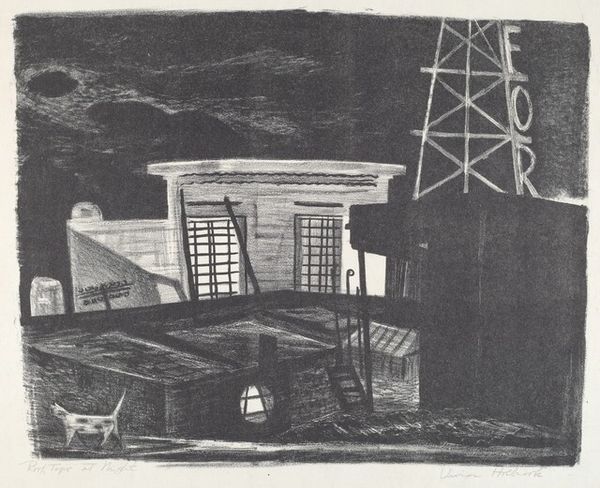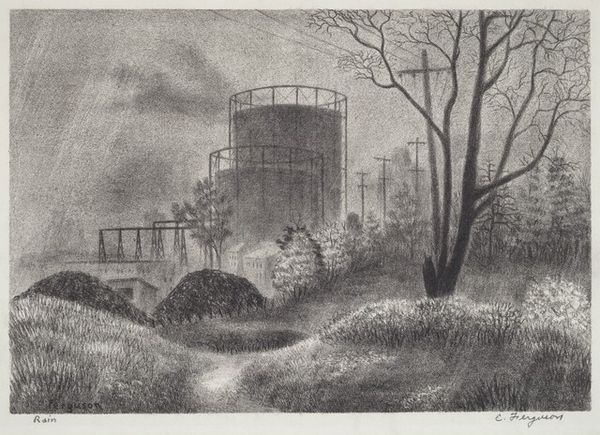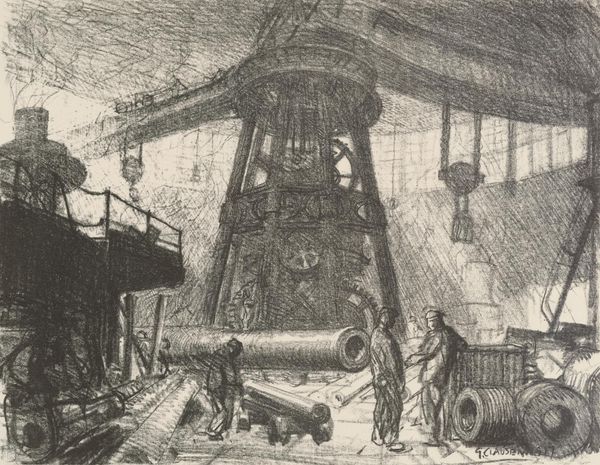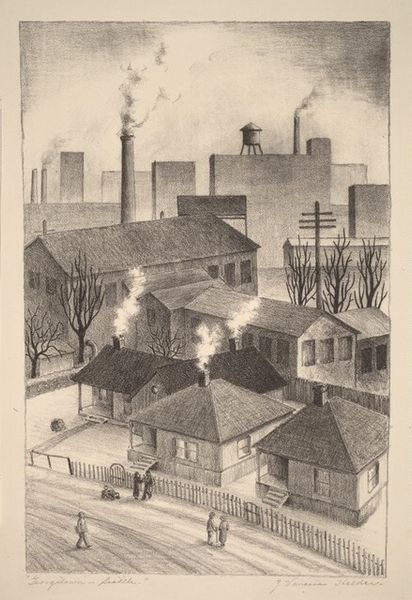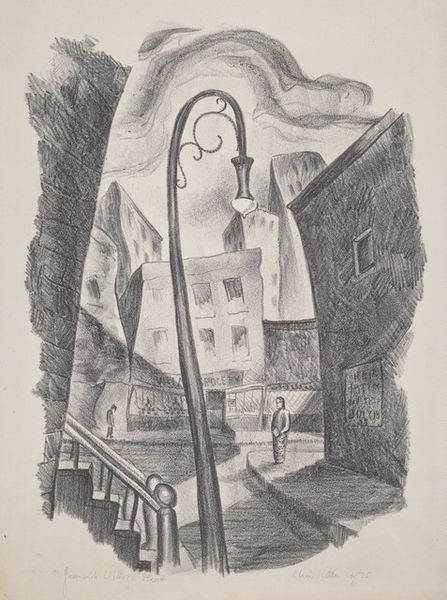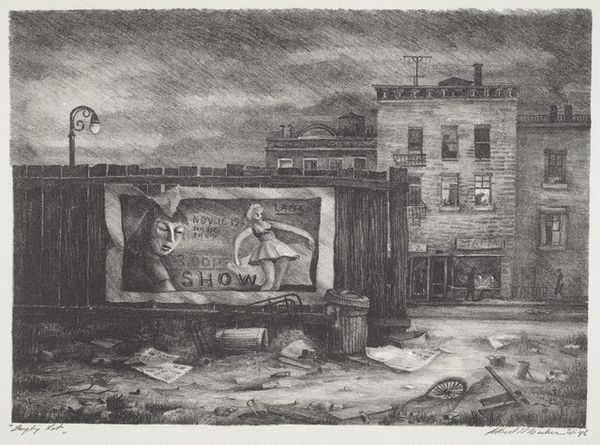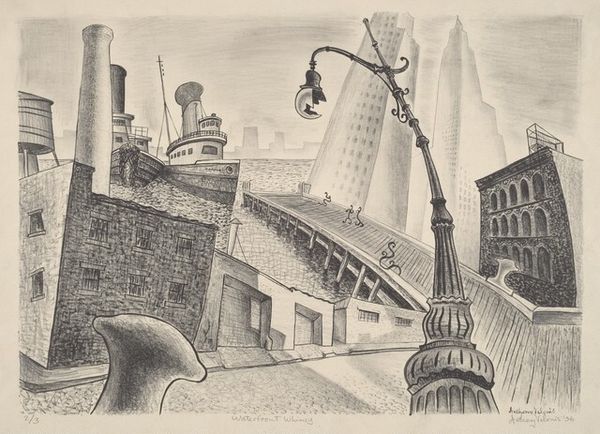
drawing, print, pencil
#
drawing
# print
#
pencil
#
cityscape
#
history-painting
#
realism
Dimensions: 216 x 289 mm
Copyright: National Gallery of Art: CC0 1.0
Editor: This drawing, "Damsel in Distress" by Wade White, dated 1934, is rendered in pencil and print. The composition feels quite deliberate, almost staged. The scene shows urban life, but it seems oddly devoid of joy or movement, overshadowed by a fountain under construction. How do you interpret this work? Curator: That sense of staged stillness you observe is quite astute. Looking at the context of 1934, during the Depression, we need to question what is being "constructed," both literally and metaphorically. The 'damsel' isn't just 'in distress'— she’s circumscribed, one small piece in an ordered cityscape and overshadowed by civic progress. It begs the question, who benefits from this progress, and who is left behind, leashed to the status quo? Is the statue elevated to such great heights symbolic of patriarchy and power structures? Editor: So you're saying the fountain represents not just progress, but potentially oppressive systems? I hadn't considered that. It makes you wonder about the little boy, walking rigidly alongside his mother. Curator: Exactly. Notice how the lines are very rigid. There is an absence of play, innocence seems controlled. Also, consider how gender is constructed in this image. A man with a cane walks away, while a mother is constrained in this civic space, both following well-worn routes. Could we read that small dog as a symbol of enforced domesticity, further binding her to the location? Editor: I now see that reading the city itself as a symbol is key, one built perhaps on a foundation of constrained roles. This city is not made for everybody to enjoy, as certain liberties seem only implied and granted for particular individuals. Curator: Precisely. Considering that urban development and city planning are never neutral but have discriminatory consequences, it invites the questions, ‘Who is this civic space really for?’ Editor: This has completely shifted how I see the drawing! The sense of disquiet is no longer just a feeling, but something deeply rooted in the work's social context.
Comments
No comments
Be the first to comment and join the conversation on the ultimate creative platform.
